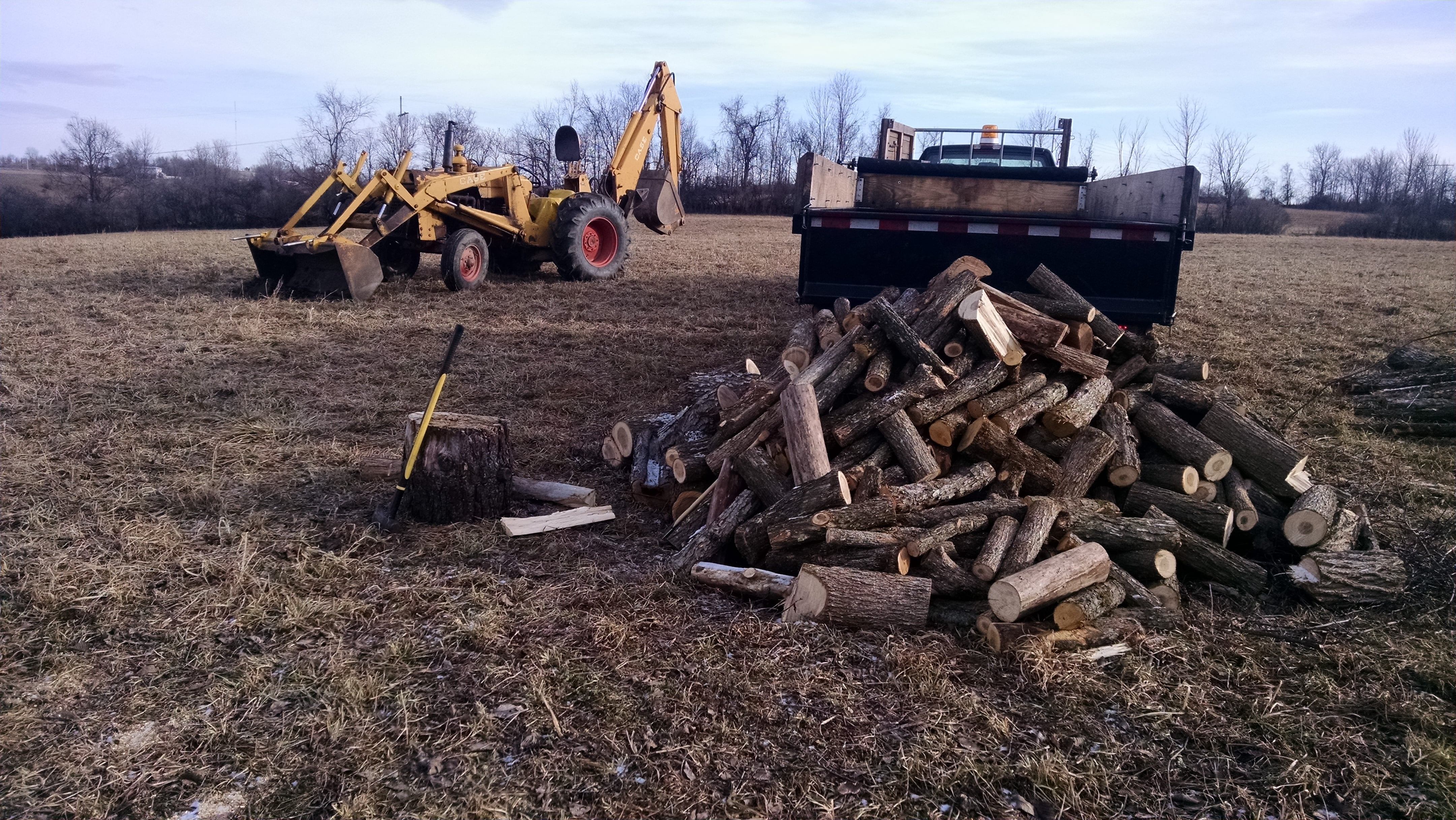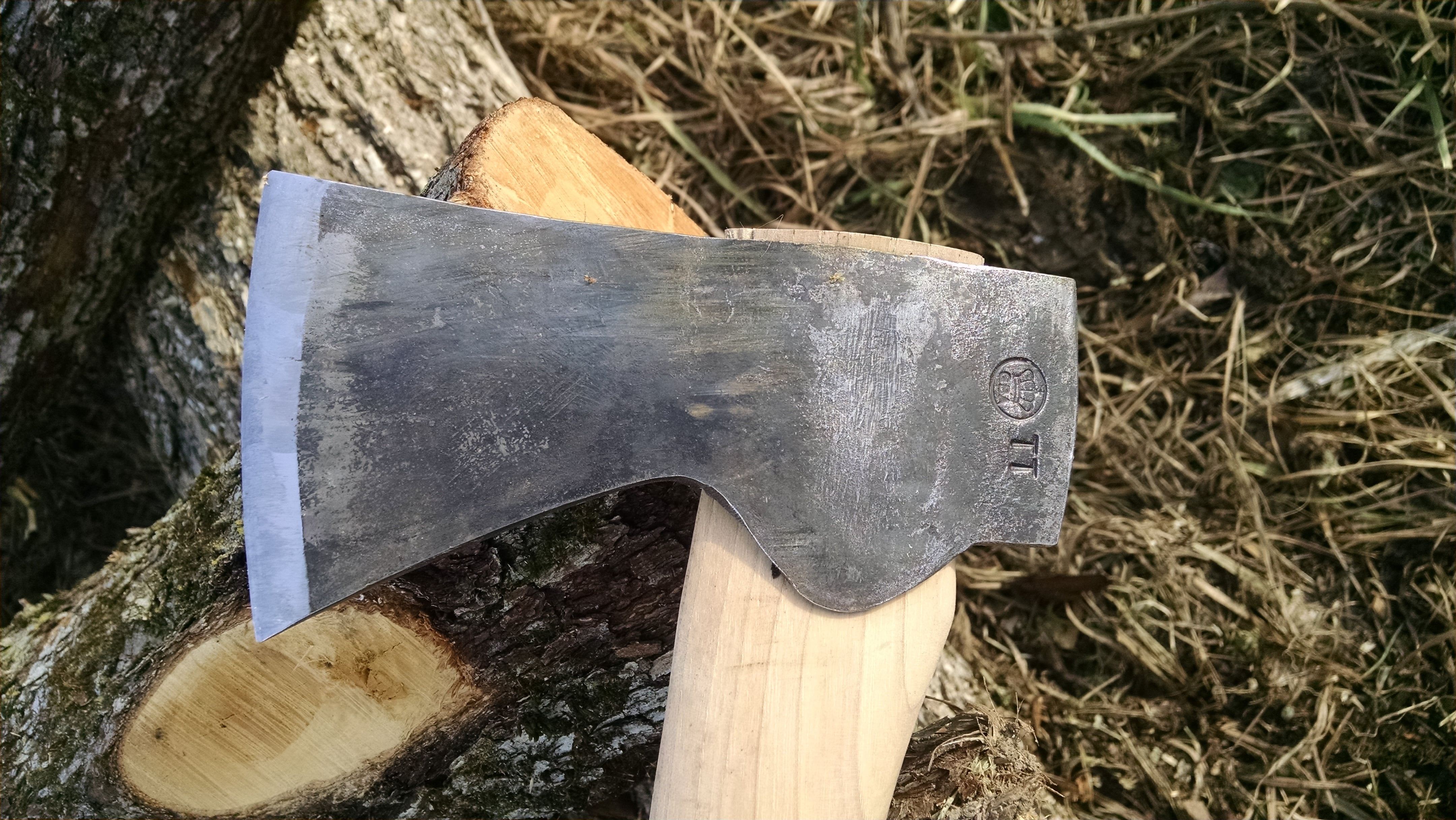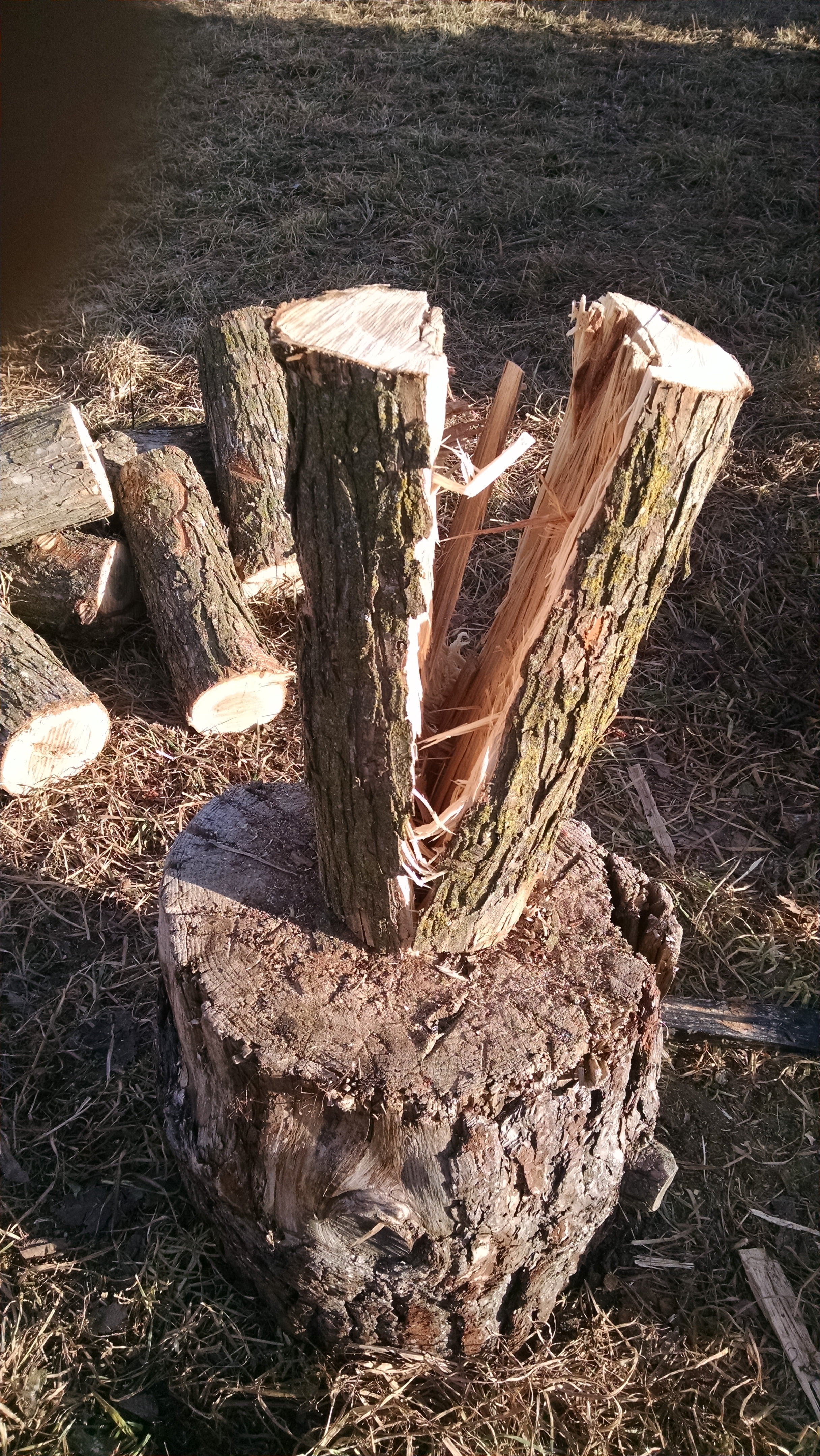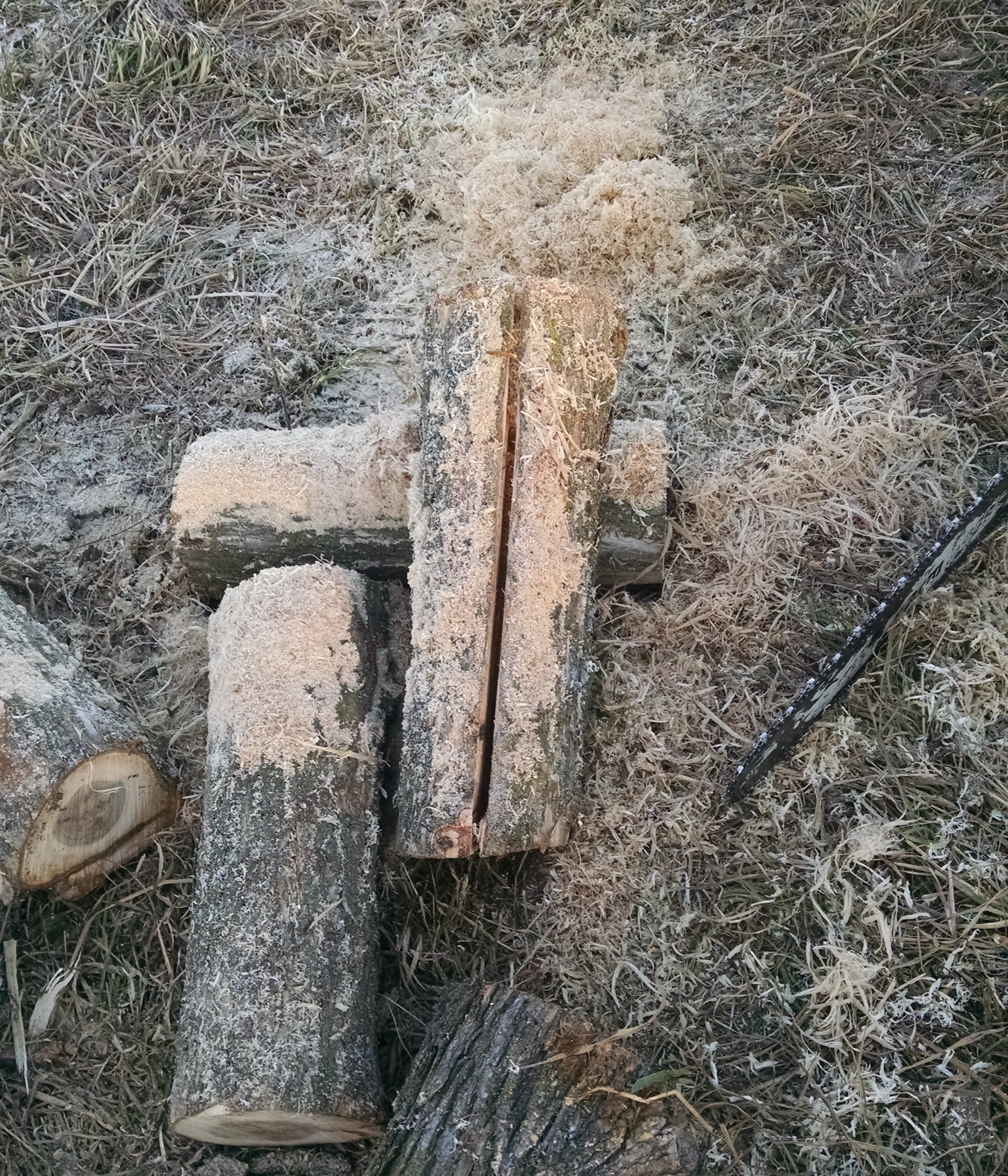In the forest someone’s whispering to a tree now
This is all I am so please don’t follow me
And its your brother in the shaft that I’m a-swinging
please let the kindness of forgetting set me free
– Kristian Mattson, The Tallest Man on Earth
Yesterday was a perfect day for working on logging and firewood. It was in the mid 20’s, sunny, and by the afternoon the wind mostly died down. Perfect weather for hard work – cool enough to not break a sweat, warm enough to not need a coat. After an unseasonably warm late December, we had some good hard freezing weather without snow accumulation, so the ground is now hard enough to drive across the pastures.

We’ve been clearing out the brushy ravine where we’d like to place build our pond (more on the pond in a future post). The area has a few red pines. These particular pine trees aren’t the best specimens we have, but we’ll cut them in 12 foot lengths and get them milled into 2x lumber. We always can use building lumber. Most of rest of the larger trees are dead or dying elms and ashes, with two or three chokecherries scattered in. The underbrush is a dense tangle of grapevines and hawthorns (aka thorn apples). The elm and ash make pretty good firewood. We burn the larger hawthorns also, although their long spines make handling them obnoxious.

This winter we bought a new axe. It is amazing what the right tool can do. This is the Gransfors Small Forest Axe. It is a very handy addition to our wood cutting tool kit. It has enough handle length that it can be used two-handed, but it works best one-handed. It is perfect for clearing all those pesky thorns off the hawthorn trunks, limbing small branches, and chopping grapevine tangles. These are the sorts of things that we usually do with the chainsaw, but chainsaws aren’t particularly efficient for any of these tasks.

Elm is an unpredictable wood for splitting. Some rounds pop right apart, but some are twisted and almost impossible to split, and most are bound together with a network of stringy fibers. The new axe is also perfect for slicing through all the strings.

When we split elm, we sometimes find it necessary to resort to brute force and start the split with a chainsaw. It is usually most effective to ripsaw along the length of the log (sometimes called noodling for the curly noodle-shaped shavings that the saw spits out) and then crack along the saw kerf with the splitting maul. It can make you feel a bit inadequate when your maul is just bouncing off a small eight inch diameter elm log. That’s when it is time to break out the chainsaw and teach the log a lesson it won’t forget…
Wood burning purists prefer to use larger splits from the main trunk for firewood. But we are wood burning pragmatists. We cut the limb wood all the way out to about 3″ diameter pieces. They don’t burn as well since they have a larger proportion of sapwood and bark. But they are made of wood, so we use them.
